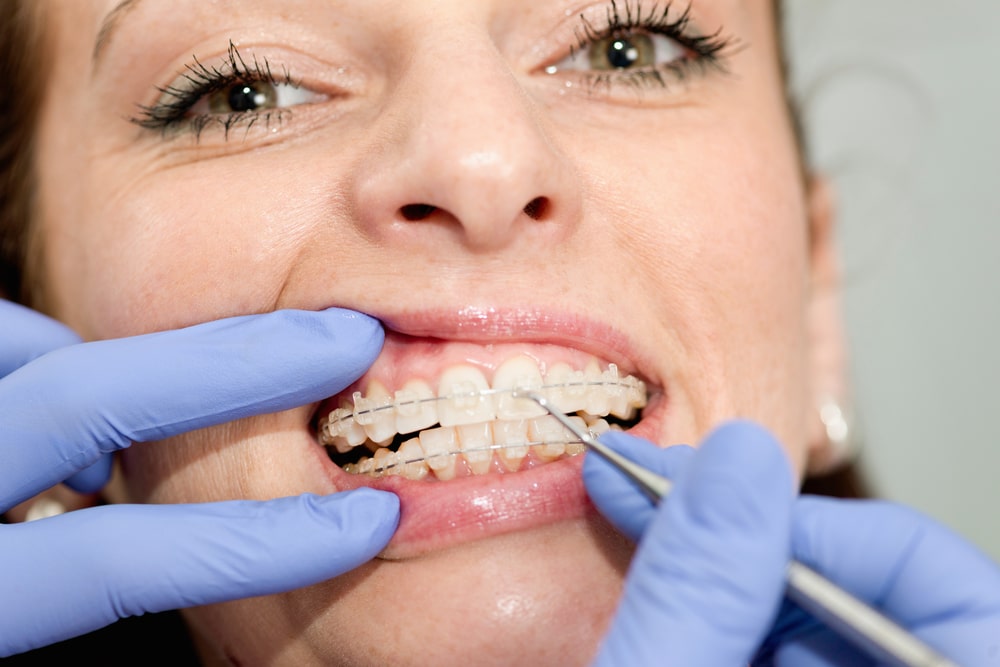Fascination About Legacy Orthodontics
Fascination About Legacy Orthodontics
Blog Article
See This Report about Legacy Orthodontics
Table of Contents7 Simple Techniques For Legacy OrthodonticsTop Guidelines Of Legacy OrthodonticsThe Main Principles Of Legacy Orthodontics Some Known Questions About Legacy Orthodontics.Some Known Questions About Legacy Orthodontics.
In addition, we supply flexible treatment schedules, adaptable settlement alternatives and a fun, enjoyable experience.An orthodontist is a dental expert trained to identify, stop, and deal with teeth and jaw irregularities. Orthodontists function with people of all ages, from kids to grownups.
Malocclusion, or misaligned teeth, can lead to oral concerns, including dental caries, periodontal disease, and difficult or uncomfortable chewing. Not everyone is birthed with straight teeth. If you have a bad bite or large areas between your teeth, you might wish to consult a dentist specializing in orthodontic care.
Things about Legacy Orthodontics
( Photo Credit History: DigitalVision/Getty Images) Orthodontists make use of repaired and removable oral tools, like braces, retainers, and bands, to alter the setting of teeth in your mouth. Orthodontic therapy is for oral problems, consisting of: Jagged teethBite troubles, like an overbite or an underbiteCrowded teeth or teeth that are too far apartJaw misalignmentThe goal of orthodontic therapy is to improve your bite.
A healthy and balanced bite guarantees you can eat, chew, and talk correctly. While you might believe of orthodontists as generally for youngsters or teens who require braces, they can deal with oral issues at any type of age. Orthodontists go to college, dental school, and orthodontic institution. After graduation, they invest 2 or 3 years in an orthodontic residency program.
All orthodontists are dental professionals, but not all dental professionals are orthodontists. Orthodontic residency programs offer extensive, concentrated direction for oral specialists. They focus on two areas: Exactly how to correctly and securely relocate teeth How to properly lead advancement in the teeth, jaw, and faceOnce an orthodontist has completed training, they have the choice to come to be board certified.
Excitement About Legacy Orthodontics
Misalignment, or malocclusion, is the most common factor people see an orthodontist. It is genetic and is the outcome of size differences between the top and lower jaw or in between the jaw and teeth. Malocclusion results in tooth overcrowding, an askew jaw, or irregular bite patterns. Malocclusion is normally treated with: Your orthodontist connects steel, ceramic, or plastic square bonds to your teeth.
If you have just minor malocclusion, you may have the ability to use clear braces, called aligners, rather than traditional braces (https://hearthis.at/legacyortho/set/legacy-orthodontics/). Some individuals require a headwear to help move teeth right into line with stress from outside the mouth. After braces or aligners, you'll need to put on a retainer. A retainer is a custom device that maintains your teeth in area.
They're frequently used on kids. They can produce extra space in the mouth without needing to draw teeth. If you have a significant underbite or overbite, you may require orthognathic surgical procedure (also called orthodontic surgical treatment) to extend or reduce your jaw. Orthodontists use cords, surgical screws, or plates to sustain your jaw bone.
You may require to see an orthodontist if you have: Crowding or not sufficient room for all of your teethOverbite, when your upper teeth come by your base teethUnderbite, when click this link your base teeth are as well much forwardSpacing or problems with gapsCrossbite, which is when your upper teeth fit behind your bottom teeth when your mouth is closedOpen bite or a vertical void in between your front base and top teethMisplaced midline, when the facility of your base and top teeth don't align Dealing with a dental malocclusion can: Make biting, chewing, and talking easierImprove the proportion of our face and your overall appearanceEase discomfort from temporomandibular joint disordersDifferent your teeth and make them less complicated to clean, assisting stop dental caries or dental caries It's usually a dentist that first notifications misaligned teeth throughout a regular test.
More About Legacy Orthodontics

During your very first orthodontic appointment, you'll likely have: A dental examPhotos taken of your face and smileDental X-raysPanoramic (360 level) X-rays of your face and headImpressions to create mold and mildews of your teethThese examinations will help your orthodontist recognize just how to proceed with your treatment. invisalign. An orthodontist is a dental practitioner that's had training to treat your teeth and jaw
Orthodontists might execute surgery, exams,X-rays,and even more to help you attain an extra comfy, healthier smile. An orthodontist is focused on your bite, so something like a damaged tooth would certainly be handled by a dental practitioner. Orthodontists are dental professionals but not all dental professionals are orthodontists. Orthodontists are concentrated on your bite, or the means your teeth fit together, and the straightness of your teeth.
Ever before questioned how stars always appear to have completely aligned teeth? The solution commonly hinges on the skilled hands of an orthodontist. Yet just what does an orthodontist do? Orthodontists are oral experts that concentrate on remedying abnormalities in the teeth and jaws. Their experience surpasses just developing a stunning smile; it includes enhancing your general oral wellness and function.
10 Simple Techniques For Legacy Orthodontics

While braces are one of the most commonly acknowledged orthodontic treatment, orthodontists have a varied toolkit at their disposal. The details strategy chosen depends on the extent of the case, the person's age, and private choices. These reliable braces make use of a system of brackets bonded to the teeth and attached by wires.
These removable trays are personalized to considerably move the teeth's position. In cases of slim jaws, palatal expanders can be used to develop room for appropriate tooth alignment.
Report this page